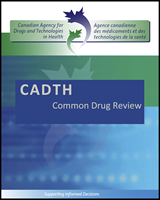| | UNITI-1 | UNITI-2 |
|---|
| Designs & Populations | Study Design | Phase III superiority DB RCT |
|---|
| Locations | North America (including Canada), Europe, Asia, the Asia-Pacific region, South Africa, and Brazil (178 sites) | North America (including Canada), Europe, Asia, the Asia-Pacific region, South Africa, and Brazil (175 sites) |
|---|
| Randomized (N) | N = 769 randomized
N = 741 after study restarta | N = 640
N = 628 after study restarta |
|---|
| Inclusion Criteria |
|
Age ≥ 18 Moderate-to-severe active c CD or fistulizing CD of ≥ 3 months’ duration with colitis, ileitis, or ileocolitis (radiographic, histologic, and/or endoscopic confirmation) Receiving CS and/or MTX, AZA, or 6-MP Inadequate response or intolerance d to conventional therapy (CS and/or MTX, AZA, or 6-MP) or is CS dependent Not had inadequate response or intolerance to ≥ 1 TNF antagonist(s) d, eMeet criteria for concomitant medication stability, screening laboratory test results, and TB history and testing results
|
|---|
| Exclusion Criteria |
CD complications requiring surgery or precluding use of CDAI to assess response Intra-abdominal abscess within 8 weeks of randomization Bowel resection or diversion within 6 months, or other intra-abdominal surgery within 3 months of randomization Draining stoma or ostomy Positive test for enteric pathogens within 4 months of randomization Previous treatment with: IL-12 or IL-23 inhibitor (e.g., UST or BRI) Received parenteral CS within 3 weeks, immunomodulators other than AZA, 6-MP, or MTX within 6 weeks, biologics within 8 weeks, or TPN within 3 weeks
Active or latent TB, opportunistic infection, HIV, or hepatitis B or C infection |
|---|
| Drugs | Intervention | A single dose at week 0 of:
UST IV infusion 130 mg
or
UST IV infusion (approximately 6 mg/kg):
260 mg if body weight is ≤ 55 kg 390 mg if body weight is > 55 to ≤ 85 kg 520 mg if body weight is > 85 kg
|
|---|
| Comparator(s) | Placebo |
|---|
| Duration | Phase |
|---|
| Run-in | 5 weeks (used for screening) |
|---|
| Double-blind | 20 weeks
Week 6 primary outcome assessment Week 8 assessment for entry to the maintenance-treatment study (IM-UNITI) Week 9 to 20 follow-up for those not entering the maintenance-treatment study
|
|---|
| Follow-up | 44-week maintenance study (IM-UNITI) |
|---|
| Outcomes | Primary End Point | Clinical response at 6 weeks |
|---|
| Other End Points |
Clinical remission at week 8 IBDQ and SF-36 at week 6 WLQ, productivity VAS, time lost from work CD-related surgery AE, SAE, WDAE
|
|---|
| Notes | Publications | Feagan et al. 201625 |
|---|
